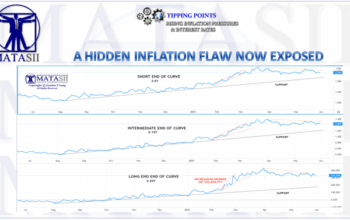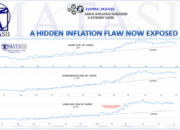Mass extinction events have defined the history of life on Earth, marking moments of profound biological change and upheaval. Notably, there exists a growing body of research suggesting that these events may exhibit a certain degree of cosmic synchronization, potentially indicating that they are influenced by extrinsic astronomical factors. This discourse seeks to unravel the complexities surrounding mass extinction events, their periodicity, the possible cosmic drivers behind them, and the implications for our understanding of life’s trajectory on Earth.
The five major mass extinction events recognized in the geological record—the Ordovician-Silurian, Late Devonian, Permian-Triassic, Triassic-Jurassic, and Cretaceous-Paleogene extinctions—demonstrate varying causes and environmental consequences. Each event resulted in the loss of a significant percentage of Earth’s biodiversity, reshaping the evolutionary landscape. The Permian-Triassic extinction, for instance, is notable for eradicating approximately 96% of marine species and 70% of terrestrial vertebrate species. Such drastic alterations in biodiversity invite inquiries into the fundamental mechanisms behind these catastrophic transformations.
The concept of cosmic synchronization posits that mass extinctions could be related to astronomical phenomena, such as solar system dynamics, galactic cycles, and even extragalactic influences. The hypothesis is bolstered by geological data that propose a cyclical pattern to many extinction events, often clustered around specific intervals. Additionally, arguments have been made suggesting that certain celestial events, like supernovae or gamma-ray bursts, could contribute to these synchronized patterns, inflicting ecological stress through increased radiation or alterations in climate.
To understand the implications of cosmic synchronization, one must examine the cyclical nature of geological phenomena. The work of paleontologists and other earth scientists has revealed periods of extensive biodiversity loss that correspond to cosmic cycles, such as the solar system’s movement within the Milky Way galaxy. As the sun sustains its journey through the galactic plane, it periodically traverses regions of heightened cosmic dust and gas density, which may in turn trigger radical shifts in climate through the associated increase in cosmic rays or gravitational effects on celestial bodies within the solar system.
Another fascinating premise relating cosmic forces to mass extinctions concerns asteroid and comet impacts. The infamous Chicxulub impactor, responsible for the Cretaceous-Paleogene extinction, underscores the potential for spaceborne bodies to induce catastrophic terrestrial events. Some researchers theorize that a history of similar impacts could offer an explanation for the periodicity observed in mass extinctions. Based on calculations involving craters and collisions, it becomes apparent that our solar system is not static but is susceptible to the gravitational pull of larger celestial entities, influencing the background rate of impacts over geological time scales.
Furthermore, paleomagnetic studies and data derived from sedimentary records suggest correlation between mass extinctions and periodic changes in Earth’s magnetic field. In times of magnetic reversal, the atmospheric conditions can be altered, possibly aggravating climatic instability. Such fluctuations may coincide with heightened cometary activity, lending further credence to the idea of a synchronized interplay between cosmic phenomena and terrestrial biological outcomes.
Not all scientific discourse aligns on the premise of cosmic synchronization. Alternative explanations frequently allude to volcanic activity, particularly in relation to the Siberian Traps during the Permian-Triassic extinction or the Deccan Traps during the Cretaceous-Paleogene event. The release of vast quantities of volcanic gases, such as sulfur dioxide and carbon dioxide, can catalyze climate change, thereby precipitating massive biodiversity loss. The juxtaposition of these terrestrial causes with extraterrestrial influences presents an intriguing dichotomy in the field of paleobiology.
Each mass extinction event similarly features unique biotic responses, elucidating not only the resilience of some life forms but also the differential survival of lineages. While certain taxa vanish entirely, others endure and adapt, setting the stage for evolutionary radiations in subsequent epochs. The recovery of ecosystems post-extinction—termed biotic recovery—reveals patterns that may also be influenced by both intrinsic biological factors and extrinsic cosmic events, illustrating the complexity of life’s resilience in the face of extinction.
As contemporary researchers delve into genomic studies, the prospect of understanding mass extinctions deepens. Enhanced analytical techniques enable a clearer view of the genetic bottlenecks that result from these cataclysmic events. Understanding the genetic response of surviving lineages to external pressures might furnish insights that reconcile terrestrial and cosmic hypotheses.
In conclusion, the investigation into the potential cosmic synchronization of mass extinction events reveals vast interdisciplinary connections spanning paleontology, astrophysics, and environmental science. As scientists strive to decipher the myriad influences shaping life on Earth, it becomes increasingly vital to adopt a holistic perspective. Acknowledging both terrestrial and cosmic factors can elucidate the intricacies of extinction patterns, shedding light on future biodiversity and ecological resilience in an ever-changing universe. The dialogue surrounding these significant evolutionary markers continues to evolve, urging a reconciliatory narrative that honors the multiplicity of forces governing life on our planet.












